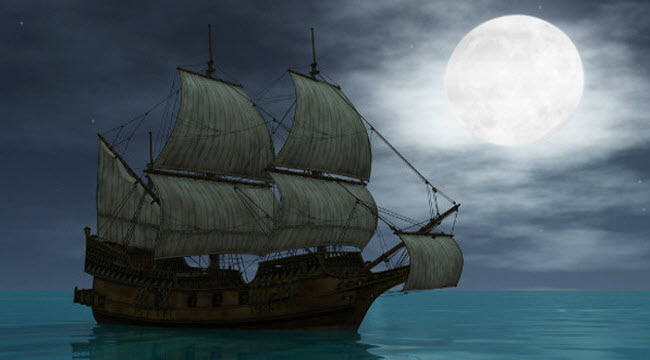Ships have always been central to some of the most famous historical incidents. Some, like the Titanic, ended in tragedy, while others are remembered for their heroism, such as the warships that won numerous battles. However, some ships are shrouded in mystery due to their sudden disappearances without a trace, particularly in areas like the Bermuda Triangle. But perhaps even more mysterious than disappearing ships are those found abandoned, with no crew onboard and no clues as to what happened. This phenomenon has happened to several ships throughout history, but the most famous of all is the American merchant vessel, the Mary Celeste. Discovered in perfect condition but completely devoid of its crew, the Mary Celeste has left one of the most perplexing maritime mysteries to this day.
The story of the Mary Celeste began on December 5, 1872. The British ship Dei Gratia, navigating through rough seas, spotted a ship adrift, seemingly abandoned, off the Azores, about 1,600 kilometers west of Portugal. A crew from the Dei Gratia boarded the derelict ship and found everything in excellent condition. The crew’s clothes were neatly packed, and there were sufficient supplies of food and water for six months. However, no one was found on board. The only signs that something had gone wrong were a disassembled pump in the hold and a missing lifeboat. Thus began one of the longest-standing mysteries of the sea.

Investigating the route of the Mary Celeste reveals that she set sail on November 7, 1872, under the command of Captain Benjamin Briggs, accompanied by his wife, daughter, and a crew of seven. The ship was transporting a cargo of alcohol from New York to Genoa, Italy. However, they never reached their destination. After leaving New York, the Mary Celeste sailed through rough seas and strong winds for two weeks. On November 25, Captain Briggs made what would be the last entry in the ship’s log, noting that all was well. But when the ship was found on December 5, no one was aboard. The crew of the Dei Gratia found the cargo intact, though a few barrels were empty. Fortunately, the ghost ship was still seaworthy, so part of the Dei Gratia‘s crew took control, and both ships sailed to Gibraltar, where they could claim salvage rights under maritime law.

For over a century and a half, the mystery of what happened aboard the Mary Celeste has remained unsolved. Many theories have been proposed, from crew mutiny after drinking the cargo alcohol (though there were no signs of violence) to pirates attacking the ship (though the cargo and all valuables were still on board). Some even suggested that sea monsters could have attacked and devoured the crew. However, all these theories have been debunked by the available evidence. Another more plausible theory is that fumes from the alcohol caused an explosion of a barrel cover, and fearing a fire, the crew abandoned the ship. Yet, this theory also faced skepticism since the barrel covers were tightly sealed. Others speculated that the crew of the Dei Gratia might have attacked the Mary Celeste to claim her cargo. When both ships arrived in Gibraltar, the Dei Gratia crew demanded their salvage rights, leading the Admiralty Court to initially suspect them. However, after a three-month investigation, no evidence of foul play was found, and they were awarded a sixth of the ship’s total value.

In 1884, the Mary Celeste inspired Sir Arthur Conan Doyle, the creator of Sherlock Holmes, to write a short story titled “J. Habakuk Jephson’s Statement,” which became so popular that it prompted the authorities to reopen the investigation. Still, no new findings were discovered. Finally, in 2002, documentary filmmaker Anne MacGregor conducted a new investigation using modern techniques. She reconstructed the ghost ship’s course and concluded that Captain Briggs had misnavigated, being 190 kilometers west of where he should have been. Realizing this, he may have changed course toward Santa Maria Island in the Azores, perhaps seeking shelter from the harsh weather. However, some believe this explanation insufficient to warrant abandoning the ship. MacGregor continued her explanation by revealing that the ship had recently undergone a refit, and coal dust and debris from the renovations had clogged the pumps that removed water from the ship’s bilge. As a result of this blockage, the crew might have feared the ship would sink and decided to abandon it.
While MacGregor’s theory may not be universally accepted or provable, it aligns with the evidence, such as the disassembled pump, in ways that other theories do not. It could be the logical and accepted solution to the Mary Celeste’s mystery, despite the ship’s troubled history. The father of the ship’s owner died on board, leading his son to believe the ship was cursed and sell it. Subsequent owners also faced bad luck, with the last owner attempting to sink the ship for insurance. He overloaded it, but when it didn’t sink, he tried to burn it, only for the insurance company to discover the fraud. He was prosecuted and died penniless. The Mary Celeste, now notorious, was left to decay and was eventually claimed by the ocean floor.
